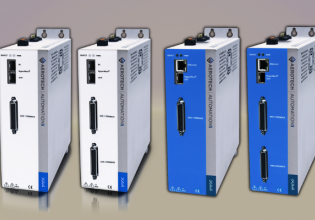Overcurrent Protection: Motor Starter Trip Classes for Industrial Motors
Trip classes protect motors from overcurrent, but when will an overload relay trip, why, and what trip class should you use?
Motor starters have a simple task. As the name implies, they provide the power required to start or stop motors.

Figure 1. An industrial three-phase electric motor.
Usually, these devices are paired with three-phase motors, although one-phase and even DC motors can sometimes be seen paired with these devices. These starters have overcurrent limiting breakers, but they have unique properties that separate them from standard circuit breakers.
An Introduction to Motor Starters
A typical motor starter consists of two pieces designed to enable the on/off switching action and stop the motor automatically in case of overcurrent.
The motor trip class refers to the number of seconds for which the starter will allow high current during start-up, but various applications may affect which trip class is required.

Figure 2. NEMA starters and contacts. Image used courtesy of Siemens
It might be appropriate to first investigate what situations can lead to high current flows in a motor. Understanding these situations is important since there are cases in which high current is expected and perfectly normal.
How Overcurrent Occurs
First, overcurrent can result from a heavy load on the motor. Excessive friction in under-maintained bearings might be a reason, or perhaps a conveyor with heavy cargo. Another case might offset loads causing vibration. This is a commonly overlooked problem since the actual load itself may not be that extreme—simply the physics of the rotational forces.
Solving these problems involves proper maintenance and following manufacturers’ loading specifications. In addition, vibration issues from harmonics are prevented with proper engineering. This happens more often with in-house fabrications, which may result in some unanticipated motion physics.
The second reason for overcurrent is the simple starting of a motor, and this situation is inevitable. The faster a motor is started, the more extreme the current consumption. This is called in-rush current. Many AC clamp current meters have a function specifically for measuring this current, which might be many times the standard full-load amps of the motor. It is a significant difference.
This current is not meant to be prevented. However, it may be reduced with soft-starts or VFDs to slowly ramp up the motor speed. Unloading the motor may also provide a lighter starting current, then loaded once the motor is running.
Motor Starter Parts
There are two motor starting components: The contactor and the overload relay.
The contactor is a large coil, much like a relay, with several sets of contacts that carry heavy current loads with ease. These contactors often have auxiliary control contacts.
An overload relay (OL) is often included as an additional stage screwed directly to the output terminals of the contactor. This OL is designed to open the contacts in the case of excess current.

Figure 3. An array of electric overload relays. Image used courtesy of Eaton
With both of these components together, the device is called a motor starter.
Now that we’ve covered how overcurrent can occur, why motor starters are important, and its components, let’s dive into trips.
When Will an Overload Relay Trip?
This is an important question.
The answer is not to say that the overload should trip if the current is higher than the full load amps (FLA). If this were the case, the OL would trip every time the motor starts, which would be a very impractical situation.
It must be capable of withstanding high current momentarily, but should provide protection if the motor rises to above full-load conditions after reaching full speed, which would be indicative of failure.
Overloads are typically built to withstand 600% (or 6x) the FLA of the motor for that short duration, but then fall to a protection level just over the FLA in steady-state operation.
Motor Trip Classes
The time for which the OL should pause before reacting will be different for various motors and applications is called the motor trip class.
The most common trip classes are 5, 10, 20, and 30, which refer to the number of seconds for which the OL will allow this 600% current in-rush. Applications for each of these trip classes can be classified as the following.
- The lowest, trip class 5, is for motors with very sensitive loads and must start quickly.
- Trip classes 10 and 20 are usually seen in most generic motors with a standard start-up time.
- The largest, trip class 30, is for large, heavy loads that take a long time to start under regular operation. If a lower trip class is used, the OL will trip far too often.
Some overload relays are purchased with a fixed trip class. Others have configurable trip classes using switches to use for all sorts of situations.
Each facility will need a different trip class depending on its application (e.g., assembly lines and conveyors, robots and AGVs, ASRS, etc.). Therefore, based on your facility’s needs, you can choose from trip classes 5, 10, 20, or 30. Which of these do you use, and for what applications?






